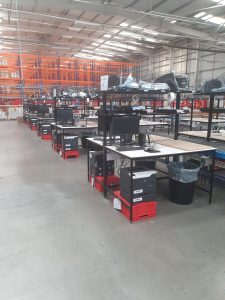Your basket is currently empty!

Joules revenue rise shows that fashion retailing still profitable
16/12/2019 by Katrina
The latest profit figures from clothing retailer Joules show that fashion retailing in the UK can still be successful.
There have been several high profile fashion retail failures in the last year or two, including Bonmarché, Khaadi Fashion and Jack Wills. Joules is not joining this trend because it has a revenue growth of 3.1%. This has been achieved by its e-commerce sales rather than its wholesale and retail shop operations.
Joules is known for its premium clothing, accessories and footwear for men, women and children. It has 124 stores and 33 concessions and plans to open four more stores. Joules admits that fashion trading has had a tough year, and is facing competition from fashion retailers selling at discounted prices.
Nick Jones, the chief executive of Joules, said:
“We continue to invest in our proposition to meet changing customer expectations in a scalable and profitable way and, with positive momentum across both digital and physical channels.”
Having both retail and online operations is the key to fashion retail success adopted by many brands including Crew Clothing. Warehouses have been built or adapted to handle both orders to retail stores and online orders to individual customers. This has been beneficial for warehouse equipment manufacturers who have increased their garment rail production to meet the storage requirements of these new warehouse spaces.
Online fulfilment centres can store far more items than retail stores, and this enables fashion brands to offer online customers a far wider range of clothing that drives more sales.
You may also interested in:

How repairing damaged warehouse equipment beats replacing entirely
A White Paper by Southgate Global has detailed how repairing warehouse equipment instead of
Warehouse operators warned about energy compliance crisis
New energy regulations could render some warehouse space unusable by 2030 due to
